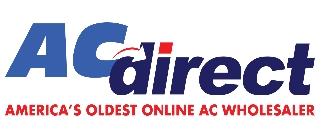Inside the HVAC Supply Crunch and What It Means for Prices, Products, and You
-
 By
Michael Haines
By
Michael Haines
- Mar 6, 2025

If you’ve tried to order an HVAC system in the last couple of years and heard “backordered,” “limited stock,” or “delayed shipping,” you’ve felt the ripple of something bigger. Supply chains have always been a part of this business, but now they’re front and center. The way systems get built, stocked, and delivered has changed. The reasons aren’t always obvious—but they affect every homeowner and contractor looking to get a system installed this year. Here’s what’s really going on behind the scenes, why the manufacturers are scrambling, and what you can do to stay ahead of it.
What’s Really Going On With HVAC Supply Chains
The HVAC industry was never built for speed. It was built for predictability. Manufacturers forecast demand, build to inventory, and ship through a long line of distributors. But that model broke down during the pandemic—and it’s still being rebuilt today.
You’ve got three big issues happening at once. First, raw materials like copper, aluminum, and specialized electronic components are harder to get and more expensive. Second, shipping routes are slower and more expensive, whether it’s overseas freight or cross-country trucking. Third, there’s regulatory pressure to change refrigerants and meet new energy efficiency standards—so manufacturers are changing over their production lines in the middle of everything else.
This creates a perfect storm. Some models go out of stock while others are being redesigned. Even systems that used to be off-the-shelf now have lead times of several weeks or months. And because of new refrigerant requirements, manufacturers aren’t just restocking—they’re reengineering.
How Major Brands Are Responding
Big names like Carrier, Trane, Daikin, and Mitsubishi are in transition mode. Some are phasing out equipment that runs on R-410A in favor of models that use lower-GWP refrigerants like R-32 or R-454B. That means their factories have to be updated to handle new component specs, refrigerant handling safety, and compliance testing.
That slows everything down. It’s not as simple as changing a part—it’s a redesign, a re-certification, and a re-tooling all at once. Even brands like Goodman are facing this, which is why it's a good idea to complete your Goodman product registration the moment your unit is installed. You want that warranty protection locked in while supply is in flux.
Some manufacturers are opening regional distribution centers to localize stock. Others are adjusting how many models they offer, cutting underperformers, and focusing on volume movers. That can help availability in the long run, but in the short term it means fewer options and a greater risk of being stuck with leftovers.
The Ripple Effect on Homeowners and Contractors
When manufacturers tighten their lineup and shift production, it affects every link in the chain. Distributors might only carry one configuration of a 3 ton air conditioner instead of three. That means fewer choices when it comes to efficiency ratings, air handler pairings, and price points.
If you’re a homeowner, it’s easy to think all 3 ton ACs are the same—but they’re not. The unit you get depends on what’s in stock, how fast you can get it, and whether your contractor has access to it. That’s why planning ahead is more important than ever. Don’t wait until your system breaks in July and expect to get exactly what you want.
Contractors feel this even more. They have to bid jobs without knowing exactly what they’ll be able to order when the time comes. That puts them in a tough spot. If prices rise or stock disappears, they either lose money or go back to the homeowner for a change order.
Some contractors are stocking full systems in advance. Others are sticking with brands that offer faster lead times, even if they’re not the first choice. Everyone’s adjusting—and that includes how long it takes to schedule an install.
Why Package Units and Smart Systems Are Affected Most
The most impacted products right now are central heat and air package units and smart variable-speed systems. These are more complex, have more specialized components, and are harder to substitute.
If a capacitor or inverter board isn’t available, the entire system is delayed. That’s especially true for smart systems that rely on specific control boards or sensors that can’t be swapped. You might have the coil and condenser sitting in a warehouse, but if the board is stuck in customs, nothing moves.
Meanwhile, package units require freight handling and rooftop delivery—which means more logistical challenges. These systems are still the best option for mobile homes and flat-roof buildings, but you need to allow more time for delivery and setup.
Global vs. Domestic Manufacturing Pressure
It’s easy to blame overseas supply, but the truth is the U.S. market also faces domestic bottlenecks. Labor shortages in factories and trucking are a big factor. So are regional weather events that slow down production or shipment.
At the same time, global demand for HVAC is growing fast. Countries like India and China are building out air conditioning infrastructure at record pace. That means more competition for the same raw materials—and for the machines that make the machines.
Companies are responding by shifting some manufacturing closer to the U.S. or investing in more automation. But those changes take time. For now, it means we’re all working within a tighter inventory pool.
What Smart Buyers Should Do Right Now
If you’re shopping for a new HVAC system—or thinking you might need one this year—there are a few smart moves to make.
First, act early. Lead times are better in spring than in summer. If you know your system is on its last leg, replace it now rather than waiting for a breakdown in July.
Second, buy matched systems. Don’t try to piece together a condenser and air handler from different brands. Pre-matched setups, like a 3 ton AC system or 5 ton air conditioning unit, ship faster and are guaranteed to perform right.
Third, consider upgrade components that are in stock now. Things like an AC with UV light help with coil health and indoor air quality and might be easier to get than a full variable-speed replacement system.
Lastly, talk to your contractor or supplier about shipping and delivery options. If a home furnace needs to be ordered, make sure it comes from a supplier that stocks locally. That reduces wait time and helps you avoid installation delays.
Frequently Asked Questions
Why are HVAC units backordered?
Raw material shortages, increased demand, and changes in refrigerant and energy regulations are causing production delays. Many manufacturers are also transitioning product lines, which slows inventory restocks.
Are some brands more available than others?
Yes. Brands with domestic manufacturing or regional warehouses may have better availability. Others are more affected by international shipping delays and regulatory retooling.
Is it better to wait for prices to drop?
Probably not. Prices rarely go down in HVAC once they go up. The longer you wait, the fewer models are available, and you risk missing incentives or getting stuck with limited options.
What size units are affected most?
Mid-size residential systems like 3 ton and 5 ton models are in highest demand. These are the first to sell out when demand spikes.
Can I mix brands if one part is unavailable?
Technically, yes—but it’s not recommended. Matched systems are tested for performance and reliability. Mixing brands can void warranties and cause performance issues.
Final Thoughts from Mike
This isn’t the same HVAC market we had five years ago. Supply chains are tight, manufacturers are pivoting, and everyone in the industry is learning how to operate under new rules. That includes homeowners.
If you want your system when you need it, start thinking like a contractor. Order early. Lock in what fits your home. Stick with matched systems that ship together. And make sure your installer is working with a supplier that actually has what they promise.
At AC Direct, we’ve adjusted how we stock, ship, and support systems to make sure customers aren’t left waiting in the heat. Whether you’re replacing a furnace or adding central AC for the first time, we’ve got the experience—and the equipment—to help you beat the bottleneck.

 and now, NASCAR Racing Sponsor
and now, NASCAR Racing Sponsor










